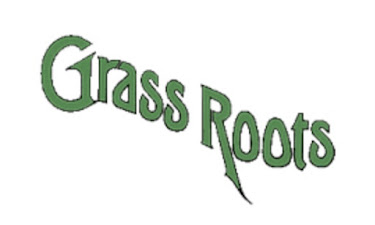Every now and again I get a comment or message asking me what Grant's wood roach business is all about. It sounds a bit weird I know, but it helps to think of it as farming on a micro-scale.
This is the interior of his new shed. Lots of room to divide up boxes as they multiply. And of course a wood fire for warmth.
What are wood roaches?
Wood roaches (woodies) are a breed of native cockroaches. They are not invasive like the ones you might get in your home. Instead, they prefer to live in leaf litter in the bush. In their natural habitat, they would eat any decaying organic matter. They don't tend to have that really pungent, recognisable cockroach smell. In bulk captivity, like we keep them, they can get smelly if their containers get too dirty. But to be fair, that's the same as any animal kept in captivity.
Why breed woodies?
Now you might be asking why someone would ever consider voluntarily breeding wood roaches, let alone who would buy such things. Well, the answer is there is a market, and it's a good market too. They are sold primarily to lizard breeders in bulk and transported in custom-made boxes via Australia Post. Woodies are high in protein and provide excellent nutrition to lizards.Grant is a wood roach wholesaler. He sells them in 1-1.5kg boxes to breeders or people who divide them up into smaller batches for pet owners. Because if you only have 1-2 little lizards, you don't need thousands of woodies to keep them well-fed! Currently, he sells them for $110/kg.
The basics of breeding woodies
The woodies are kept in a specially built shed a long way from the house. Though occasionally one tries to hitch a ride in on his clothing. They are kept in big plastic tubs, with mesh for ventilation and live between cardboard egg cartons. They need to live in warm, climate-controlled conditions so they have their very own slow-combustion wood fire to keep them toasty. They are feed chook pellets and vegetables. When we lived in SA he had them cranking along, but since moving here he is still tweaking his set-up. We haven't had a good space for them until recently. They are surprisingly fussy creatures and if the conditions are wrong they can have a mass die-off, or simply not breed.
It's a surprisingly good money earner when it is running well. Grant's record for selling woodies was $25,000 one year, though he hasn't managed anywhere near that since moving to the farm due to too many variations in their conditions. Currently, they look healthy and active, but they don't seem to be breeding which is frustrating. It takes a whole breeding cycle, over a period of months to see an improvement. Because they can be fiddly, prone to mass die-off, and the ick factor, there are not that many breeders able to reliably turn off large quantities. Grant has the space and experience to have a seriously big production. It will just take a little more time to get the breeding conditions just right.
The next job for the shed is insulating it, adding external cladding and putting on a solar system to help with heating during the day. This will ensure they can be kept at an even temperature day/night without the hassle of keeping the fire going around the clock.
When it comes to being a part of a small mixed farm, the woodies tie in brilliantly. They happily eat the dodgy or diseased waste from the garden and their waste is thrown to the chickens, who jump on it to clean up any stray bugs. The cooks scratch about and break up the potent woodie poop, turning it over which in turn helps to build healthy soil. The soil then grows the pasture that feeds our cattle and goats, closing the loop. Nothing is wasted.
What other insects are used for pet food?
If you have a decent-sized backyard and room for a garden shed, breeding insects might be something that you could do to bring in a bit of extra income. Mealworms and crickets are also common insects bred for the pet food industry, though you might not want to keep a large number of crickets in the suburbs. I imagine they could get a bit noisy.
While our farm may never be able to support our family of 6, we fully believe it can cover its costs, providing us with a lot of nutrient-dense, quality food and that it will eventually run at a small profit. However, we will only be able to do this if we diversify, bypassing modern monoculture farming methods and utilising what we have got.
Clearly, we will never be cattle moguls. But we choose to live simply and cheaply. We don't crave fancy cars, expensive holidays or expect our money to entertain us in the form of shopping. What a person chooses to spend, above and beyond their basic needs, is a big contributing factor to what they need to earn. We can choose to find contentment in a simpler life in nature, community, gardening, and creative outlets, or we can look externally for entertainment and value. I know what I choose, and if you are here, I suspect you do too.
Much love,
Emma
xx
Emma
xx
















So interesting! I don't think I'd like to do any insect-farming, but I can see how it has its benefits.
ReplyDeleteTo be fair, I don't do the wood roach farming! It is Grants domain. Ha! Though I do happily transport them to the post office and stoke up/light their fire if needed. xx
Delete